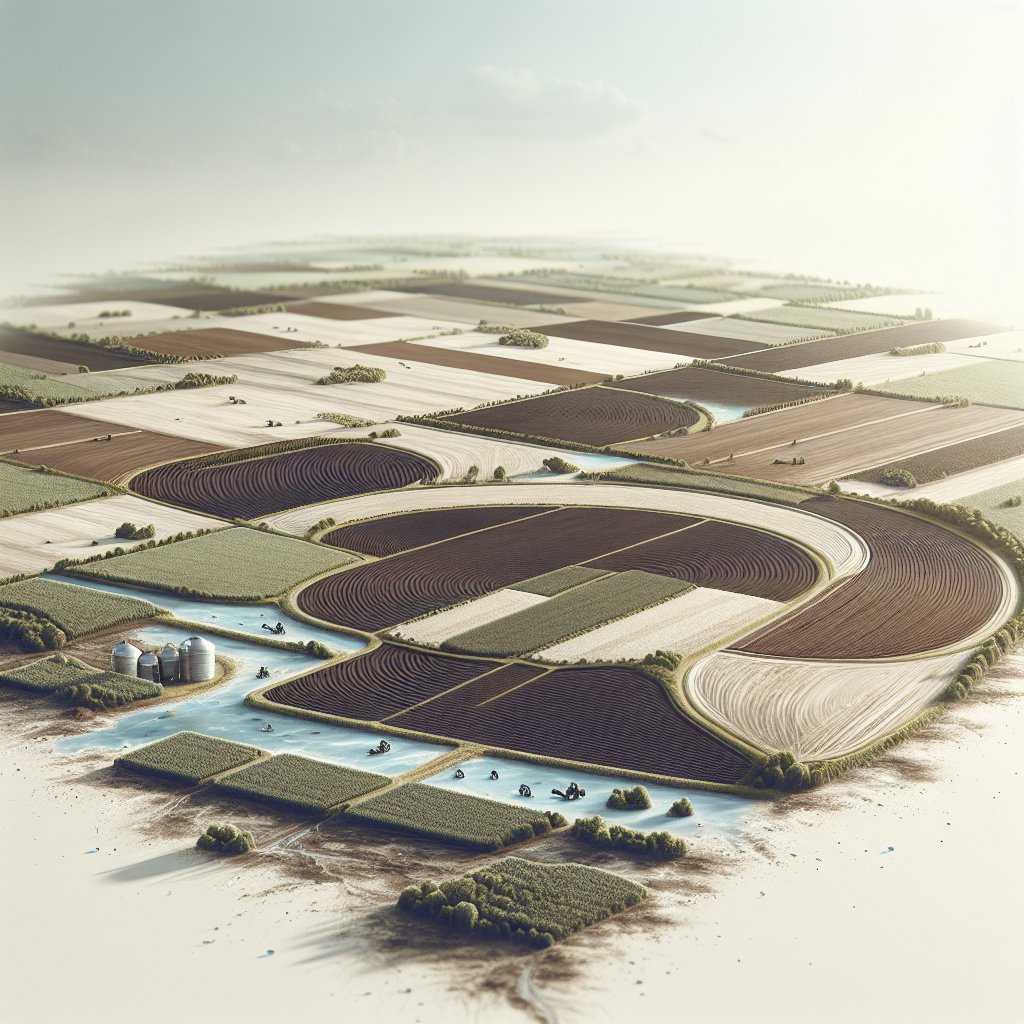
Increasing soil water retention on dry farms is a critical challenge faced by farmers worldwide, especially in regions prone to drought and water scarcity. As climate change continues to impact weather patterns, the need for effective water management strategies in agriculture becomes increasingly urgent. This article explores various methods and practices that can help enhance soil water retention, ensuring sustainable crop production even in arid conditions.
Understanding Soil Water Retention
Soil water retention refers to the soil’s ability to hold water and make it available to plants. This property is crucial for plant growth, as it determines how much water is accessible to crops during dry periods. Several factors influence soil water retention, including soil texture, organic matter content, and soil structure.
Soil Texture: The texture of the soil, determined by the proportion of sand, silt, and clay particles, plays a significant role in water retention. Clay soils, for instance, have a high water-holding capacity due to their small particle size and large surface area. In contrast, sandy soils drain quickly and retain less water.
Organic Matter: Organic matter, such as decomposed plant and animal residues, improves soil structure and increases its ability to retain water. It acts like a sponge, absorbing and holding moisture that plants can use during dry spells.
Soil Structure: The arrangement of soil particles into aggregates affects water movement and retention. Well-structured soils with stable aggregates allow for better water infiltration and storage, reducing runoff and evaporation.
Techniques to Enhance Soil Water Retention
There are several techniques that farmers can implement to improve soil water retention on dry farms. These methods focus on enhancing soil health, optimizing water use, and adopting sustainable agricultural practices.
1. Incorporating Organic Matter
Adding organic matter to the soil is one of the most effective ways to increase its water-holding capacity. This can be achieved through the application of compost, manure, or cover crops. Organic matter improves soil structure, enhances nutrient availability, and boosts microbial activity, all of which contribute to better water retention.
- Compost: Composting organic waste materials and applying them to fields enriches the soil with nutrients and organic matter, improving its ability to retain moisture.
- Manure: Animal manure is a valuable source of organic matter and nutrients. When properly managed, it can significantly enhance soil water retention.
- Cover Crops: Growing cover crops during the off-season helps protect the soil from erosion, adds organic matter, and improves soil structure, leading to increased water retention.
2. Conservation Tillage
Conservation tillage practices, such as no-till or reduced-till farming, minimize soil disturbance and help maintain soil structure. By leaving crop residues on the field, these practices reduce evaporation, increase organic matter, and improve water infiltration and retention.
No-Till Farming: This method involves planting crops without disturbing the soil through plowing. It helps preserve soil moisture, reduce erosion, and enhance soil health.
Reduced-Till Farming: Similar to no-till, reduced-till farming minimizes soil disturbance while allowing for some tillage to manage weeds and incorporate residues. It strikes a balance between soil conservation and crop management.
3. Mulching
Mulching involves covering the soil surface with organic or inorganic materials to reduce evaporation, moderate soil temperature, and suppress weeds. Organic mulches, such as straw, wood chips, or grass clippings, decompose over time, adding organic matter to the soil and improving water retention.
Benefits of Mulching:
- Reduces water loss through evaporation.
- Improves soil structure and organic matter content.
- Suppresses weed growth, reducing competition for water.
- Moderates soil temperature, protecting plant roots.
4. Efficient Irrigation Practices
Implementing efficient irrigation practices is essential for optimizing water use on dry farms. Techniques such as drip irrigation, scheduling irrigation based on crop needs, and using soil moisture sensors can help ensure that water is applied efficiently and effectively.
Drip Irrigation: This method delivers water directly to the plant roots through a network of tubes and emitters, minimizing water loss through evaporation and runoff.
Irrigation Scheduling: By monitoring soil moisture levels and weather conditions, farmers can schedule irrigation to match crop water requirements, reducing waste and improving water use efficiency.
5. Soil Amendments
Soil amendments, such as gypsum or biochar, can improve soil structure and water retention. Gypsum helps break up compacted soils, enhancing water infiltration, while biochar increases soil porosity and organic matter content, boosting water-holding capacity.
Gypsum: Applying gypsum to clay soils can improve their structure, reduce compaction, and enhance water movement and retention.
Biochar: This carbon-rich material, produced from organic waste through pyrolysis, improves soil health, increases water retention, and sequesters carbon, contributing to climate change mitigation.
Conclusion
Enhancing soil water retention on dry farms is crucial for sustainable agriculture in the face of climate change and water scarcity. By understanding the factors that influence soil water retention and implementing effective practices, farmers can improve their resilience to drought and ensure the long-term productivity of their land. Techniques such as incorporating organic matter, adopting conservation tillage, using mulches, optimizing irrigation, and applying soil amendments offer practical solutions to this pressing challenge. As farmers continue to innovate and adapt, these strategies will play a vital role in securing food production and preserving natural resources for future generations.

